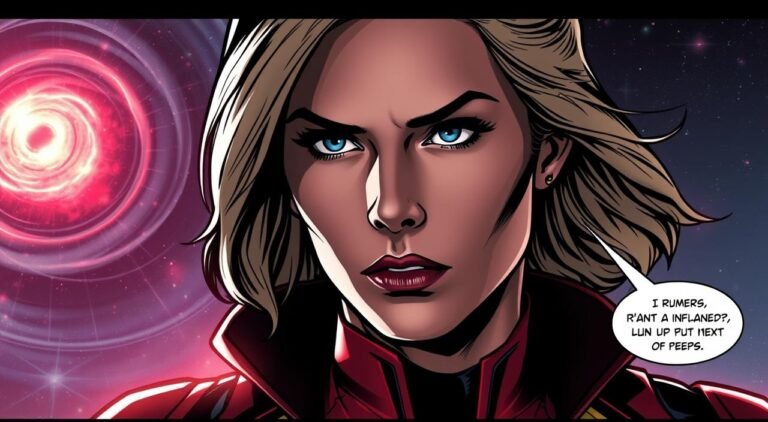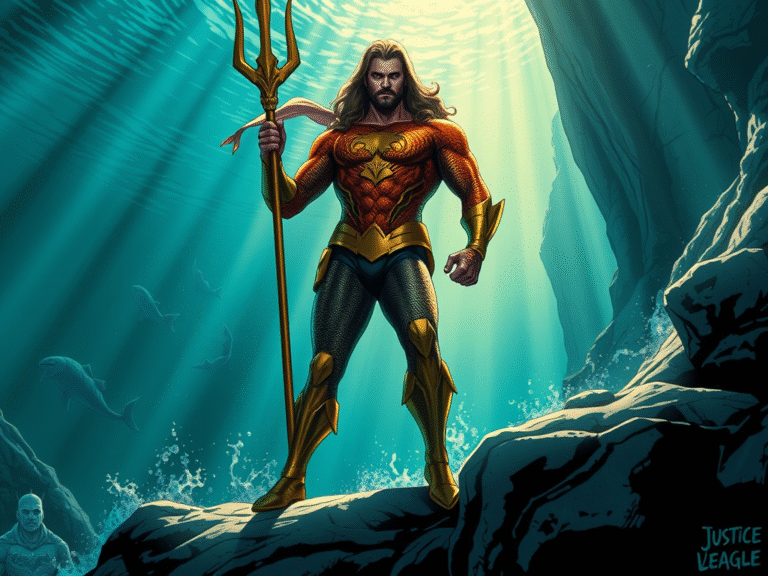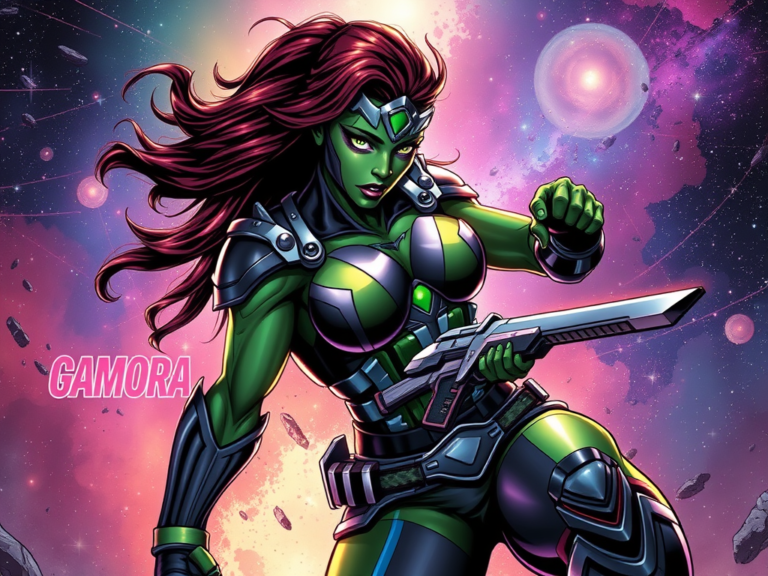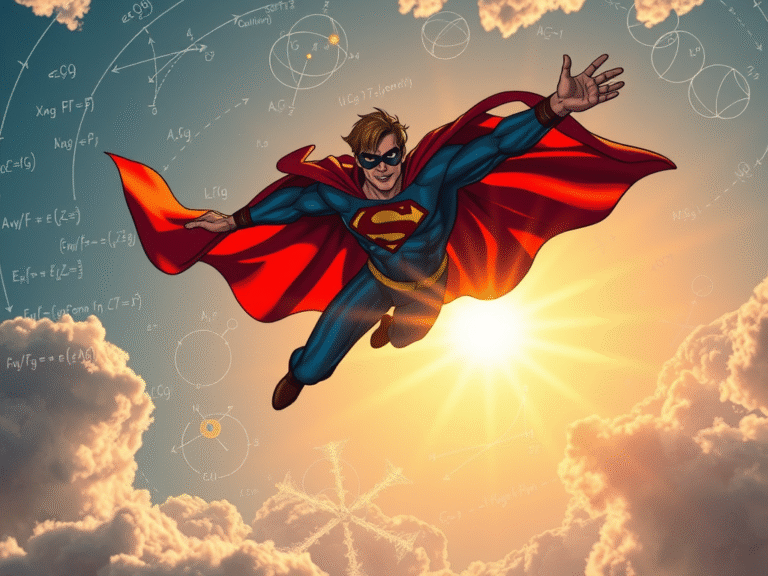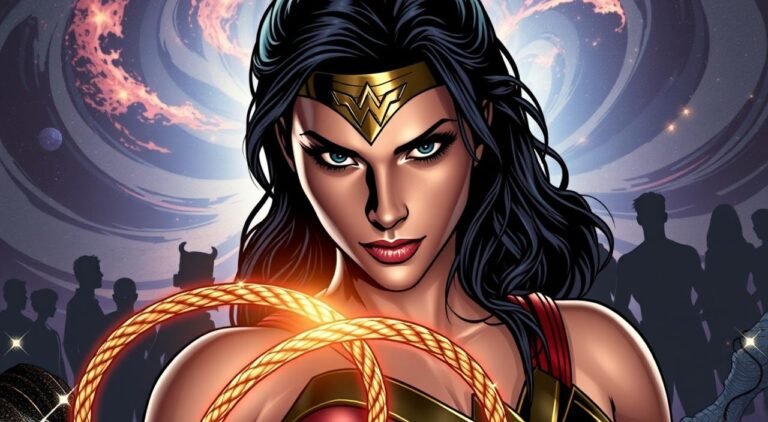The Evolution of Iron Man’s Armor Over the Years
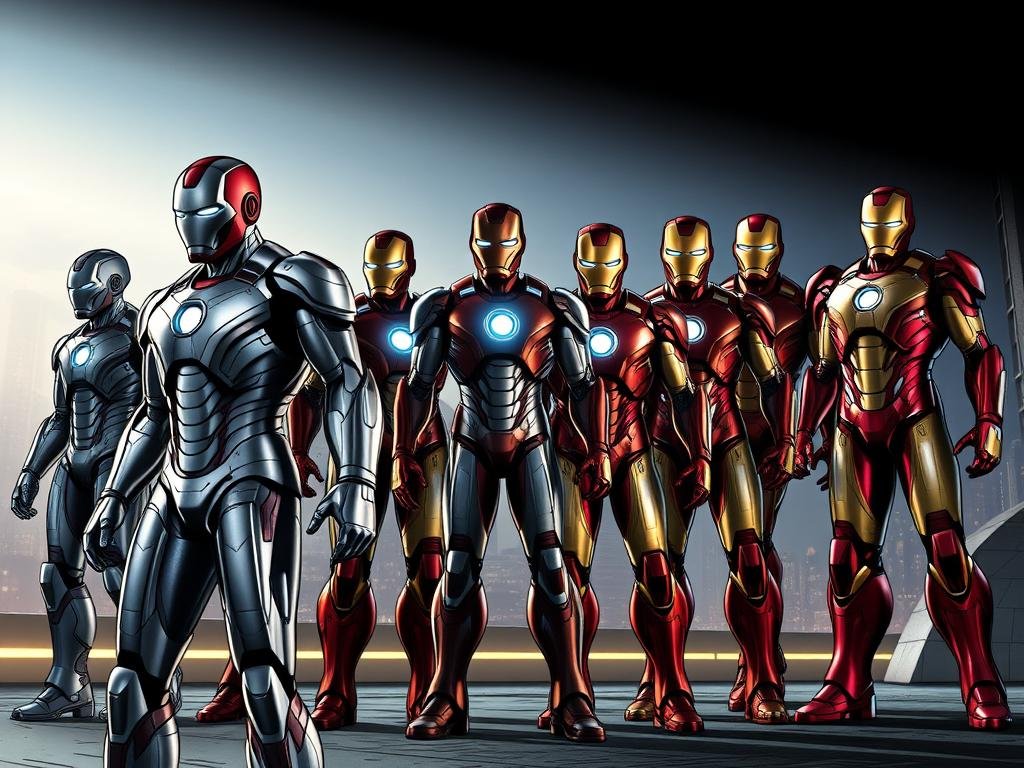
I’ll never forget watching Tony Stark crawl through that Afghan cave in Iron Man (2008), welding scraps into his first clunky prototype. There’s something raw about that Mark I armor – a mix of desperation and genius that mirrors how we all start: imperfect, but determined.
Stark’s journey from bulletproof plating to nanotech miracles isn’t just about shiny upgrades. Each suit tells a story. Remember when he upgraded to the Mark III’s iconic red-and-gold? That wasn’t just a paint job – it marked his shift from survivor to hero.
What fascinates me most is how these designs reflect real-world tech dreams. The arc reactor’s glow in his chest? More than a power source – it’s hope made visible. When Pepper Potts suited up as Rescue, it showed how far Stark’s vision could reach beyond himself.
From Hulkbuster frames to space-ready modifications, every iteration solved problems while creating new ones.
That tension between protection and progress? That’s humanity in metal form. Let’s explore how Tony Stark’s greatest invention became a mirror for our own technological aspirations.
Introduction: My Personal Journey with Iron Man’s Armors
I still remember the electric thrill of seeing Tony Stark’s crimson-and-gold helmet snap shut in Iron Man (2008).
That moment wasn’t just cool CGI – it felt like watching someone build a masterpiece with their bare hands. Every new suit became a diary entry in Stark’s life, from the clunky Mark I to the liquid-smooth nanotech versions.
What hooked me wasn’t just the armor’s firepower. It was how each creation mirrored Stark’s growth. The shift from silver to gold accents in later models? Pure visual storytelling.
I’d spend hours comparing comic panels to movie stills, noticing how the color scheme deepened from flat tones to metallic gradients that seemed to breathe.
There’s magic in the details – the way repulsors whine during takeoff, or how the arc reactor’s glow softens during quiet moments.
These choices make the man suit feel alive. When the Mark V folded out of a briefcase in Iron Man 2, I nearly cheered. It wasn’t just tech porn – it was proof that imagination could bend metal.
Stark’s design philosophy taught me that innovation isn’t about perfection. It’s about solving today’s problem while tripping into tomorrow’s breakthrough. Every scratch on that gold plating tells a story better than any mission report ever could.
The Origin Story of Tony Stark’s First Suit
Building the Mark I wasn’t about heroics—it was survival. Trapped in an Afghan cave with shrapnel creeping toward his heart, Tony Stark welded missile scraps into a clanking exoskeleton.
Every rivet screamed improvisation: repurposed steel plates, jerry-rigged hydraulics, and those iconic smoke-belching thrusters.
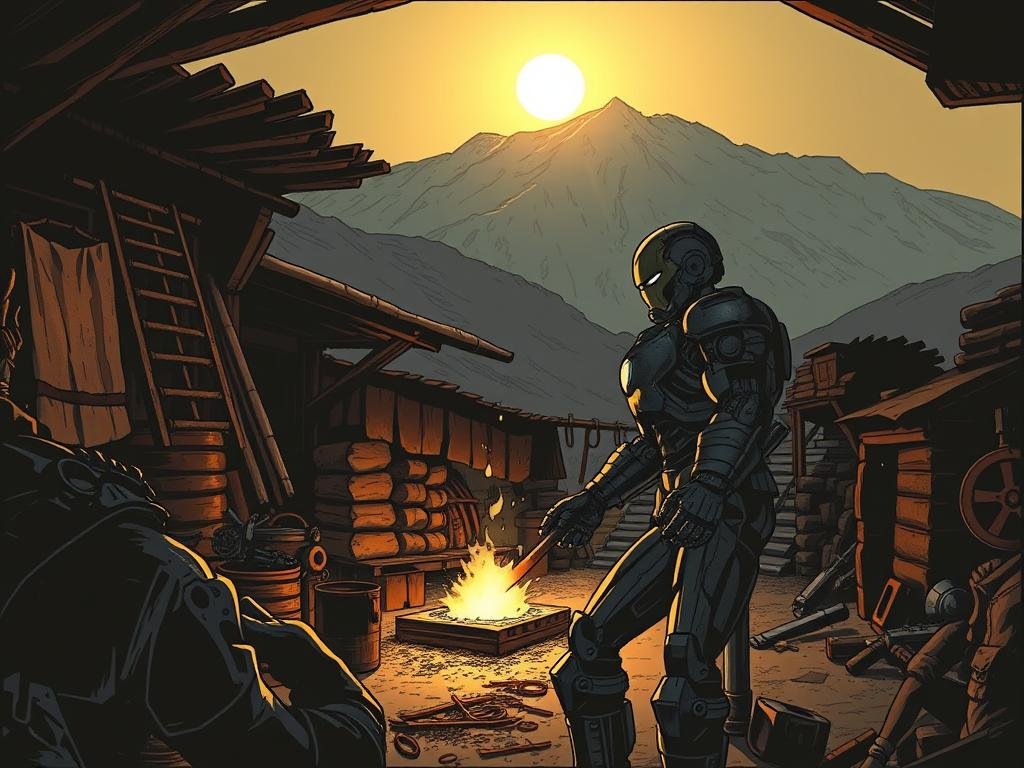
Creation of the Mark I in Afghanistan
That cave-forged suit weighed 90 pounds of pure desperation. I still marvel at how Stark turned parts from Jericho missiles into armor plating.
The arc reactor—originally built to keep him alive—became the suit’s glowing core. It wasn’t pretty, but it proved something revolutionary: one man’s genius could outbuild an army.
Lessons Learned from the First Battle
When those rocket boots ignited during escape, the suit’s flaws became obvious. Exposed joints jammed with sand. Single-use thrusters left him earthbound.
Yet that chaotic battle taught Stark everything. He saw how enemies targeted the reactor’s exposed backplate—a mistake he’d never repeat.
Even the Iron Monger prototype borrowed from this design. Obadiah Stane’s bulky knockoff proved early armor concepts had legs… until Stark snapped them.
Every limitation here—the weight, the rust—shaped sleeker models. That cave wasn’t just a workshop. It was where Iron Man learned to fly before he could walk.
- Brand New in box. The product ships with all relevant accessories
- MARVEL UNIVERSE IN15 CM SCALE: Look for other Hasbro Marvel Legends Series figures (each sold separately) with comic- an…
- PREMIUM ARTICULATION AND DETAILING: These quality 15-cm Legends Series Happy Hogan and Iron Man Mark 21 figures feature …
The Evolution of Iron Man’s Armor Over the Years
Stark’s workshop floor tells the story best—discarded prototypes collecting dust like metallic fossils. Early suits prioritized raw power over elegance, their bulky frames echoing industrial machinery.
By Mark III, Adi Granov’s comic-inspired curves replaced angular plates, merging heroism with sports-car sleekness.
Three innovations changed everything:
| Armor Version | Tech Leap | Design Shift |
|---|---|---|
| Mark I–III | Hydraulic joints | Silver to gold accents |
| Mark VII–XLII | AI-assisted assembly | Modular panels |
| Nanotech Era | Self-repair systems | Liquid-metal flow |
Energy management became critical. The arc reactor’s glow dimmed as efficiency improved—less wasted power, more precise repulsors. I geeked out when later models used car-paint techniques for that molten-metal sheen.
Watch the helmet designs across years. Early faceplates snapped shut like bank vaults. By Endgame, nanobots formed the man suit seamlessly—no visible seams, just Tony’s smirk materializing through liquid gold.
These changes weren’t vanity projects. Lighter frames allowed aerial maneuvers earlier suits couldn’t attempt. That brushed-metal color scheme from 2008? It wasn’t just pretty—it hid weld marks from rushed modifications.
Every bolt tightened and circuit rerouted paved the way for today’s bleeding-edge prototypes. Stark didn’t just build armor. He crafted a language of innovation, one rivet at a time.
Technological Marvels and Innovations in the Suits
What really blew my mind wasn’t just the armor’s looks—it was the technology under the hood. Stark’s later suits stopped being metal shells and became thinking partners. The real magic? Watching innovations leap off comic pages into cinematic reality.
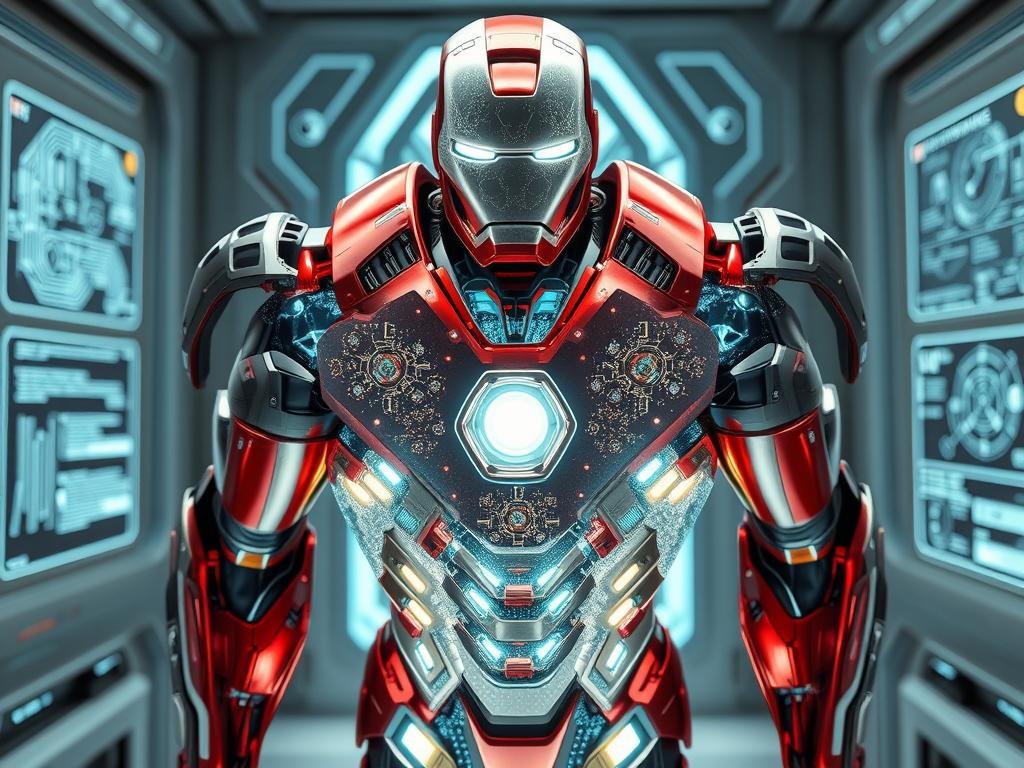
Advances in Nanotechnology and Repulsor Technology
When the Mark L materialized from Tony’s chest in Infinity War, I gasped. Nanotechnology transformed armor into liquid potential—healing cracks mid-battle and morphing into shields or blades.
Unlike clunky earlier models, these particles drew power directly from the arc reactor, optimizing energy use like never before.
Repulsors evolved too. Early versions just blasted enemies. By Endgame, they absorbed kinetic energy to supercharge attacks. Remember Thanos punching Stark? Those glowing palms weren’t just firing—they were learning.
| Armor Version | Repulsor Function | Energy Source |
|---|---|---|
| Mark III | Basic propulsion/blasts | Arc reactor Mk II |
| Mark XLII | Modular targeting | Self-contained cells |
| Mark L | Energy absorption | Nanotech reactor |
From Practical Effects to Digital Mastery
Stan Winston’s team built the first Iron Man suit with real hinges and hydraulics—you could hear gears grinding. But when Stark’s suits went nanotech, CGI became essential. ILM’s artists made liquid metal flow like honey, each particle reacting to light authentically.
The shift wasn’t just about flash. Digital technology let directors show suit-up sequences in single shots—no cuts hiding practical limitations. When Pepper’s Rescue armor formed in Endgame, every nanobot’s movement whispered: This is tomorrow’s war, today.
Iconic Design Changes: Color Schemes and Aesthetic Evolution
Color transforms armor into iconography. When Stark swapped silver plating for red gold accents in 1963’s Tales of Suspense #39, he didn’t just update a color scheme—he built a visual language.
That first bold shift from gray to metallic gold screamed confidence, while the crimson additions whispered danger.
The Shift to the Classic Red and Gold
Steve Ditko’s 1963 redesign turned functional plating into pop art. The red gold combo wasn’t random—it mirrored Ferrari’s racing elegance and military warning labels. I geeked out discovering how artists balanced warm and cool tones:
| Armor Version | Color Palette | Cultural Influence |
|---|---|---|
| Model I | Silver/Gray | Industrial machinery |
| Model II | Red/Gold | Luxury sports cars |
| Silver Centurion | Red/Silver | 1980s tech minimalism |
| Mark LXXXV | Metallic Red/Gold | Nanotech futurism |
Later design tweaks mattered more than fans realize. Brighter gold detailing on the Mark III helped cameras track motion during flight scenes. The 2010s’ gradient finishes hid battle damage while keeping that iconic color balance.
What sealed the scheme‘s legacy? It evolves without losing recognition. When Pepper’s Rescue armor kept the red gold theme, it felt like passing a torch. As artist Ryan Meinerding put it: “Great superhero design works in silhouette—you should know it’s Iron Man from the glow alone.”
Detailed Look at the Mark Series Armors
Cracking open Tony Stark’s armor catalog feels like flipping through a tech junkie’s diary. Each mark built upon the last, solving yesterday’s failures while courting tomorrow’s disasters.
What fascinates me isn’t just the shiny upgrades—it’s how every model became a time capsule of Stark’s evolving priorities.
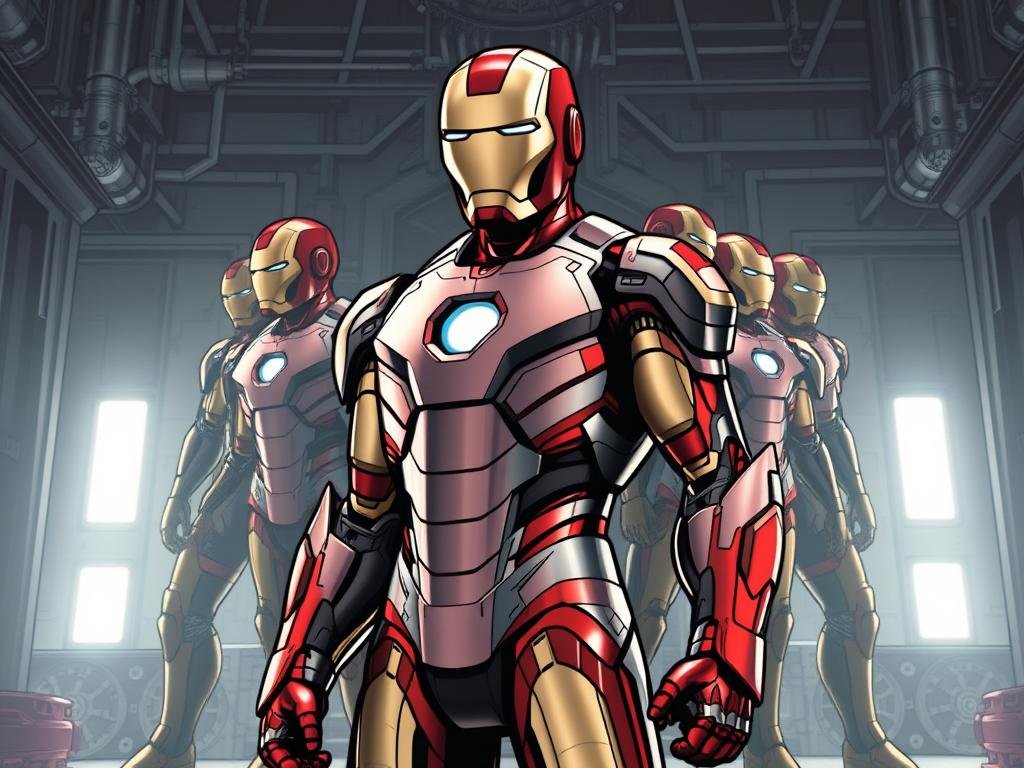
Milestones from Mark I through Mark VII
The Mark I’s welded steel plates (90 pounds of scrap metal) gave way to sleeker designs fast. By Mark III, Stark swapped bulky rivets for flexible urethane joints—that iconic red-and-gold version weighed just 40 pounds. I geeked out comparing battle damage:
| Model | Breakthrough | Battle Test |
|---|---|---|
| Mark V | Briefcase portability | Monaco racetrack |
| Mark VII | Auto-deploy jets | New York invasion |
These suits weren’t just stronger—they adapted. The Mark VII’s triangular arc reactor redirected power during aerial dogfights, something earlier models couldn’t handle. Stark’s genius? Treating each battle like a crash course in improvement.
Transitions Leading to Mark XLII and Beyond
Everything changed with the Mark XLII. Its self-assembling plates felt alive—gold nanobots flowing like liquid confidence. This version didn’t just boost strength; it anticipated threats through AI pattern recognition.
Later armors borrowed elements like Mark XLII’s modular design but added twists. The Mark L’s nanotech could repair itself mid-combat, while the LXXXV merged classic aesthetics with bleeding-edge responsiveness. Tony Stark never settled—each suit had to outthink the last.
What’s wild? Even “failed” prototypes influenced future builds. The Mark XLII’s occasional misfires led to better neural interfaces. Every dent in these Iron Man armors taught Stark how to forge tomorrow’s miracles.
Genre Action/Adventure
Format NTSC, 4K, Subtitled
Contributor Shaun Toub, Jon Favreau, Robert Downey Jr., Terrence Howard, Marvel Studios, Avi Arad, Kevin Feige, Gwyneth Paltrow, Jeff BridgesShaun Toub, Jon Favreau, Robert Downey Jr., Terrence Howard, Marvel Studios, Avi Arad, Kevin Feige, Gwyneth Paltrow, Jeff Bridges
Language English, French, Spanish, Italian
Runtime 2 hours and 6 minutes
Special and Supplemental Armors: War Machine and Hulkbuster
Some armors aren’t built for solo acts—they’re designed to amplify team strength. While Tony Stark’s personal man armor evolved for precision, his supplemental creations addressed bigger threats.
Two stand out: War Machine’s military-grade firepower and the Hulkbuster’s raw containment force.
Evolution of the War Machine Armor
Rhodey’s first helmet upgrade felt like strapping into a tank. Stark’s original silver prototype became a weapons platform under military oversight. Pepper Potts once joked it had “more guns than a general’s birthday cake”—and she wasn’t wrong.
Later models balanced firepower with Stark’s ethics. The weaponry shifted from missiles to sonic disruptors by 2016. Yet the core remained: layered plating could survive crashes that would crumple standard iron man armor.
The Impact of the Hulkbuster in Critical Battles
Bruce Banner helped design the Hulkbuster’s failsafes—a secret he regretted during its first field test. This armor wasn’t sleek. It was a walking armory with hydraulic clamps strong enough to restrain a gamma-powered rage monster.
In the Wakanda battle, its modular limbs proved vital. Sections detached to create barriers while still functioning. Unlike Stark’s usual designs, this man armor prioritized raw stability over flight—a trade-off that saved cities.
| Armor Type | Primary Purpose | Key Features | Users |
|---|---|---|---|
| War Machine | Military escalation | Gatling guns, missile racks | James Rhodes |
| Hulkbuster | Containment | Reinforced hydraulics, modular limbs | Tony Stark |
Pepper Potts later noted these supplemental suits revealed Stark’s growth: “He stopped building alone.” The collaborative edge in their armor designs—whether for a best friend or a fellow scientist—showed heroism isn’t just about one man in a metal shell.
Behind the Scenes: Crafting the Armor for the MCU
Bringing Tony Stark’s suits to life was a dance between old-school craftsmanship and digital wizardry. I learned early that every gleaming plate and glowing repulsor required solving real-world physics puzzles.
The challenge? Making audiences believe a billionaire could build flying armor in a cave—or a Malibu garage.
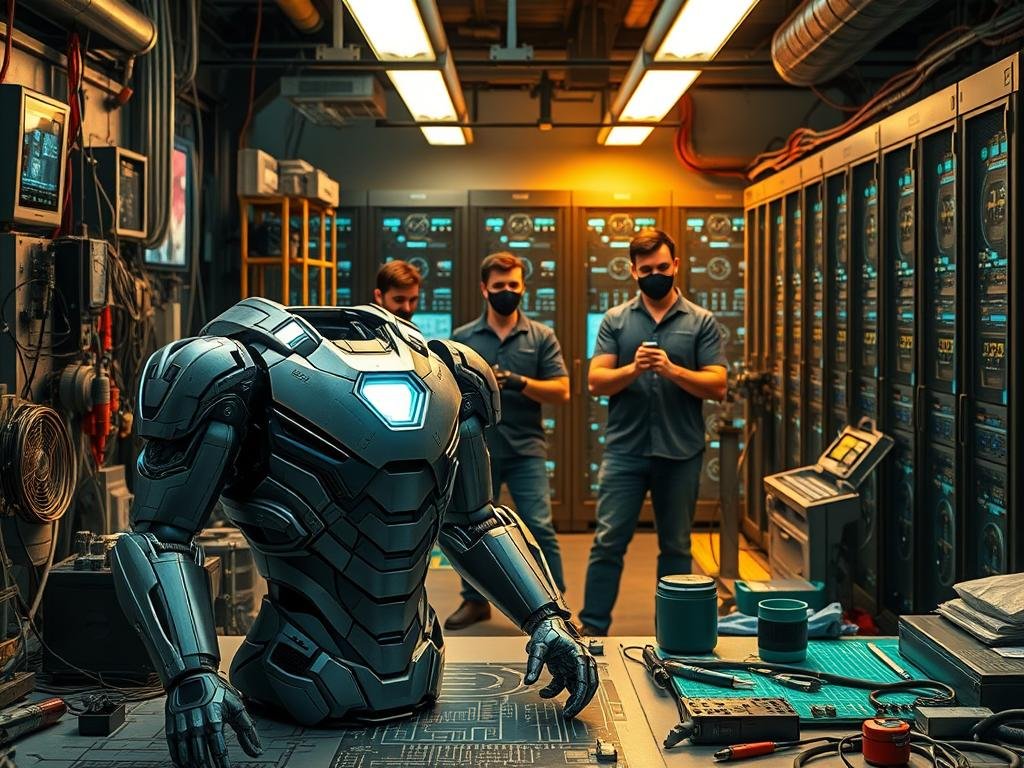
From Stan Winston Studios to ILM
Stan Winston’s team welded the first helmet from actual metal—a 90-pound beast that forced actors to move like clunky prototypes.
Stunt performers struggled with limited visibility, their breaths fogging up the arc reactor’s plexiglass heart. But these tangible suits gave actors something crucial: weight. You can’t fake the way Robert Downey Jr’s shoulders sagged under genuine steel.
When ILM took over for nanotech designs, they faced new headaches. Early CGI made the Iron Man suit look like a plastic toy. Their breakthrough? Scanning real Ferrari paint to capture metallic color shifts.
“We needed every reflection to feel grounded,” VFX supervisor Ben Snow told me. Even the repulsors’ glow borrowed from long-exposure photos of sparklers.
Mixing Practical Costumes with CGI Innovations
The best shots blend both worlds. Remember Tony’s battered Mark III removing itself? That iconic scene used a half-costume, half-digital hybrid. Practical effects nailed the helmet’s hydraulic hiss; CGI added scorch marks blooming across its surface.
Later technology let artists “pre-visualize” entire suit-up sequences. But as ILM’s Jeff White noted: “We always started with real light references. If the energy beams didn’t cast shadows on Pepper’s face, the magic died.”
From welding torches to rendering farms, each creation pushed boundaries. The result? Armor that feels less like pixels and more like tomorrow’s tech—waiting in Tony’s workshop.
Milestones in Armor Appearances on the Big Screen
Marvel movies turned Stark’s suits into cinematic legends. Two moments changed everything: when Iron Man’s helmet first sealed shut, and when that same armor crumbled in Endgame. These weren’t just scenes—they were tech-driven character arcs welded onto the silver screen.
Iconic Battles that Redefined the Suit’s Capabilities
Remember Tony Stark versus Captain America in Civil War? That airport clash forced the man armor to adapt mid-fight. Repulsors shifted from weapons to shields as Stark held back—his chest plate absorbing vibranium blows.
The Endgame finale rewrote the rules. Nanotech flowed like liquid courage, forming a gauntlet around Stark’s arc reactor. Every crack in that final model told audiences: This is sacrifice, not just science.
Collaborations with Other Marvel Heroes
Bruce Banner helped refine the Hulkbuster’s restraint features after their first disastrous test run. “You made a cage for a hurricane,” he joked—but that version saved cities.
When Pepper Potts suited up as Rescue, her armor mirrored Stark’s helmet design but with smoother edges. Their tag-team against Thanos’ forces showed how Iron Man’s legacy outlives its creator.
Even Captain America’s shield got upgrades from Stark tech. That Brooklyn bridge fight? The armor’s sensors mapped Steve’s movements, anticipating every shield throw. Teamwork made the reactor’s glow burn brighter.
Real-World Impact and Fan Reactions to the Armor Evolution
Iron Man’s tech doesn’t just live on screen—it sparks innovation in labs and workshops worldwide. When military engineers unveiled exoskeletons inspired by Stark’s man suit, fans geeked out.
“They’re building real-life Iron Man armor!” trended for days. The Pentagon’s adaptive armor projects? Straight out of Tony’s playbook.
- The chest reactor’s glow symbolizing human-machine symbiosis
- Nanotech’s liquid flow merging elegance with raw power
- Modular design allowing personalized upgrades
Online forums dissect every rivet. Reddit threads debate whether Captain America’s shield could pierce Mark LXXXV plating. TikTok creators mimic repulsor poses using LED gloves. This isn’t just fandom—it’s cultural osmosis.
Merchandise sales reveal deeper connections. Hot Toys’ $500 die-cast Iron Man figures sell out instantly. Why? As one collector told me: “Holding that power in your hands makes tomorrow feel achievable.” Even Bruce Banner’s Hulkbuster collaborations inspire STEM kits for kids.
What sticks with me? How Stark’s flaws humanized the tech. That cracked chest plate in Endgame wasn’t just CGI—it mirrored our own fragile hopes. When real-world engineers cite Tony Stark in patent filings, they’re not chasing fiction. They’re building a future where heroism wears many suits.
Future of Iron Man’s Armor and Emerging Concepts
Peering into the next era of armored suits feels like watching liquid metal dream. Designers now push boundaries Stark once sketched on napkins, blending his nanotechnology breakthroughs with wilder concepts. What’s thrilling? These ideas aren’t fiction—they’re blueprints.
Nanotech Inspirations and Next-Gen Design Trends
Today’s prototypes make Stark’s Mark L look quaint. Labs experiment with nanobots that rewrite their code mid-battle—healing cracks while morphing into new weapons.
Imagine suits adapting to deep space radiation or Martian dust storms. One engineer told me: “We’re building armor that thinks faster than its wearer.”
The U.S. military’s TALOS program—inspired by Tony Stark—already tests ultra-light armor plating.
While their exoskeletons lack repulsors, the scheme mirrors Stark’s ethos: protect first, dazzle later. Future iterations might borrow his energy-absorption tricks, turning enemy blows into fuel.
Tony Stark’s Lasting Legacy in Modern Armoury
Stark’s genius wasn’t just tech—it was philosophy. His suits taught engineers to embrace flaws. Modern man armor designs prioritize modularity, letting users swap parts like smartphone cases. Even the helmet evolves: concept art shows visors projecting holographic battle plans.
Comics hint at deep space-ready models with cryo-sleep pods. Others imagine time-jumping armor that ages backward during missions. While wild, these ideas keep Stark’s spirit alive: technology should terrify and inspire equally.
What endures? That red-and-gold scheme. Designers tweak hues for alien atmospheres, but the palette stays recognizable.
As one artist grinned: “You can’t improve perfection—just give it new playgrounds.” Stark’s legacy isn’t a single suit. It’s the belief that man armor should always outgrow its shell.
Conclusion
That final snap in Endgame didn’t just save the universe—it sealed armor’s place in pop culture history. From cave-forged plates to self-healing nanobots, each suit carried Stark’s genius and flaws. They weren’t just metal shells—they became mirrors reflecting our own tech dreams.
Every power boost and weaponry upgrade told dual stories. Bulky prototypes whispered about survival. Sleek models roared with ambition. Even Pepper’s Rescue armor proved innovation thrives beyond its creator.
What sticks? How repulsors evolved from jet assists to universe-saving tools. Or how the Mark I’s raw ingenuity still inspires real-world engineers. These armor iterations didn’t just define a hero—they reshaped how we imagine tomorrow.
Future designs will push boundaries, but Stark’s legacy remains: true progress balances power with purpose. As fans, we’re left clutching fragments of that final suit—and endless possibilities for what comes next.
FAQ
Q: What inspired Tony Stark’s shift to the classic red and gold color scheme?
A: I’ve always loved how the red and gold became iconic. Tony initially used silver and gold in the Mark II but switched to red to honor his classic Hot Rod car. The bold colors symbolized confidence and became a visual trademark of his hero identity.
Q: How did the Mark I armor influence later Iron Man suits?
A: The Mark I was raw and clunky, built in a cave with scraps. It taught Tony that armor needed mobility and power efficiency. Later suits like the Mark III refined these lessons, integrating sleeker designs and stronger arc reactor tech.
Q: Why was nanotechnology a game-changer for Iron Man’s armor?
A: Nanotech, like in the Mark L, let the suit form instantly from Tony’s chest piece. No more bulky parts! It boosted adaptability mid-battle, letting him create shields or weapons on the fly. This felt like Tony’s ultimate fusion of brains and brawn.
Q: How does the Hulkbuster armor handle extreme combat scenarios?
A: The Hulkbuster (Mark XLIV) was pure genius—modular parts could detach and repair mid-fight. Its reinforced frame and hydraulic systems gave it raw strength to counter threats like the Hulk. It showed Tony’s foresight in preparing for unpredictable battles.
Q: What role did War Machine play in evolving Iron Man’s armor designs?
A: War Machine, piloted by Rhodey, introduced heavy weaponry like shoulder-mounted cannons. Tony’s designs became more collaborative, blending his sleek style with military-grade firepower. It proved armor could be both a shield and a strategic tool.
Q: How did MCU filmmakers balance practical suits with CGI for Iron Man?
A: Early suits, like the Mark III, used real metal parts for authenticity. Later, ILM’s CGI allowed dynamic movements—like nanotech forming around Tony. The mix grounded the suits in reality while letting creativity soar for scenes like space battles.
Q: What’s Tony Stark’s lasting legacy in modern armor technology?
A: Tony showed that armor isn’t just protection—it’s an extension of human potential. His fusion of AI, repulsors, and energy efficiency inspires real-world tech. Even after Endgame, his designs push boundaries, like nanotech and AI integration in later MCU projects.


![Iron Man [4K UHD]](https://m.media-amazon.com/images/I/51O8m0sH1CL.jpg)
